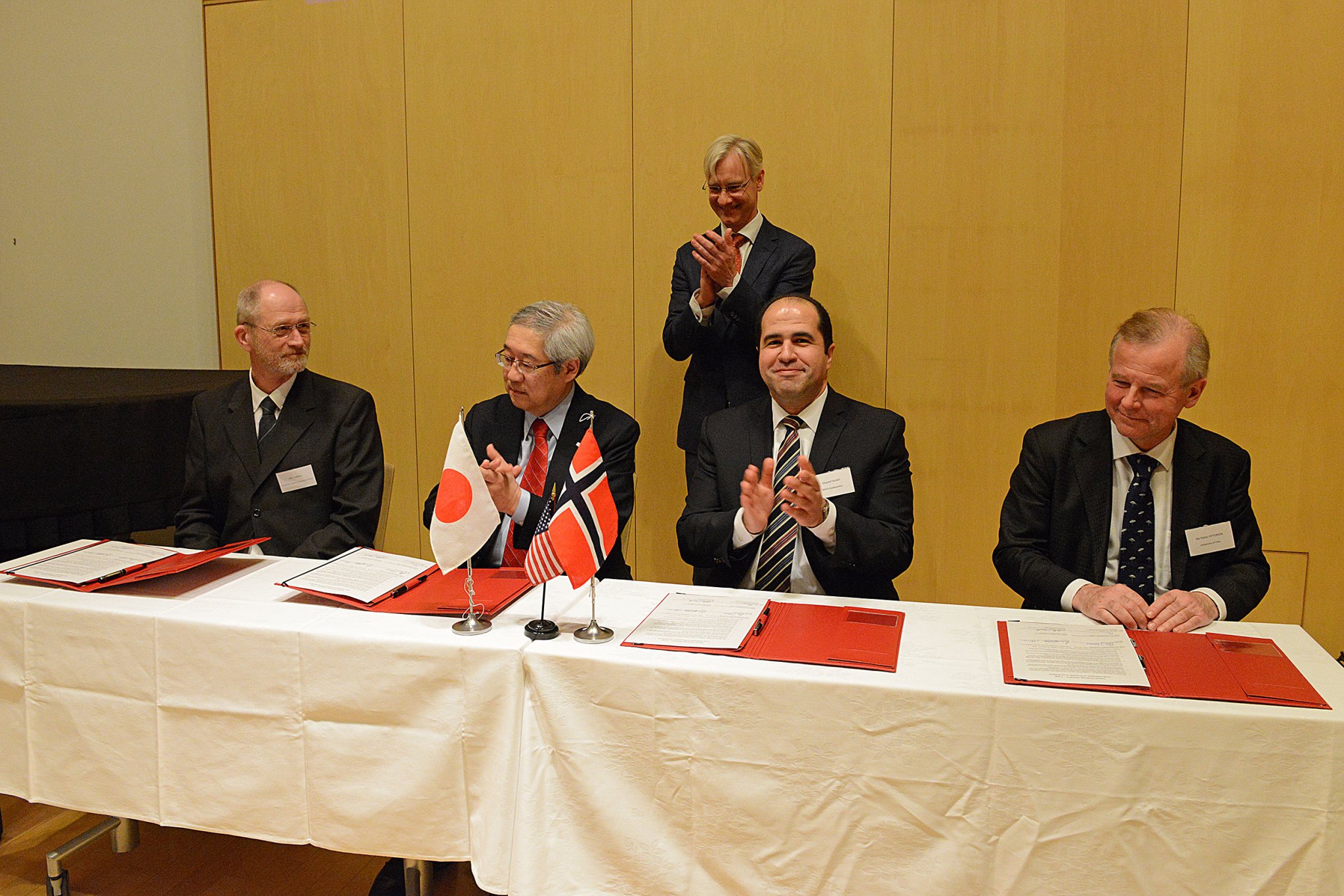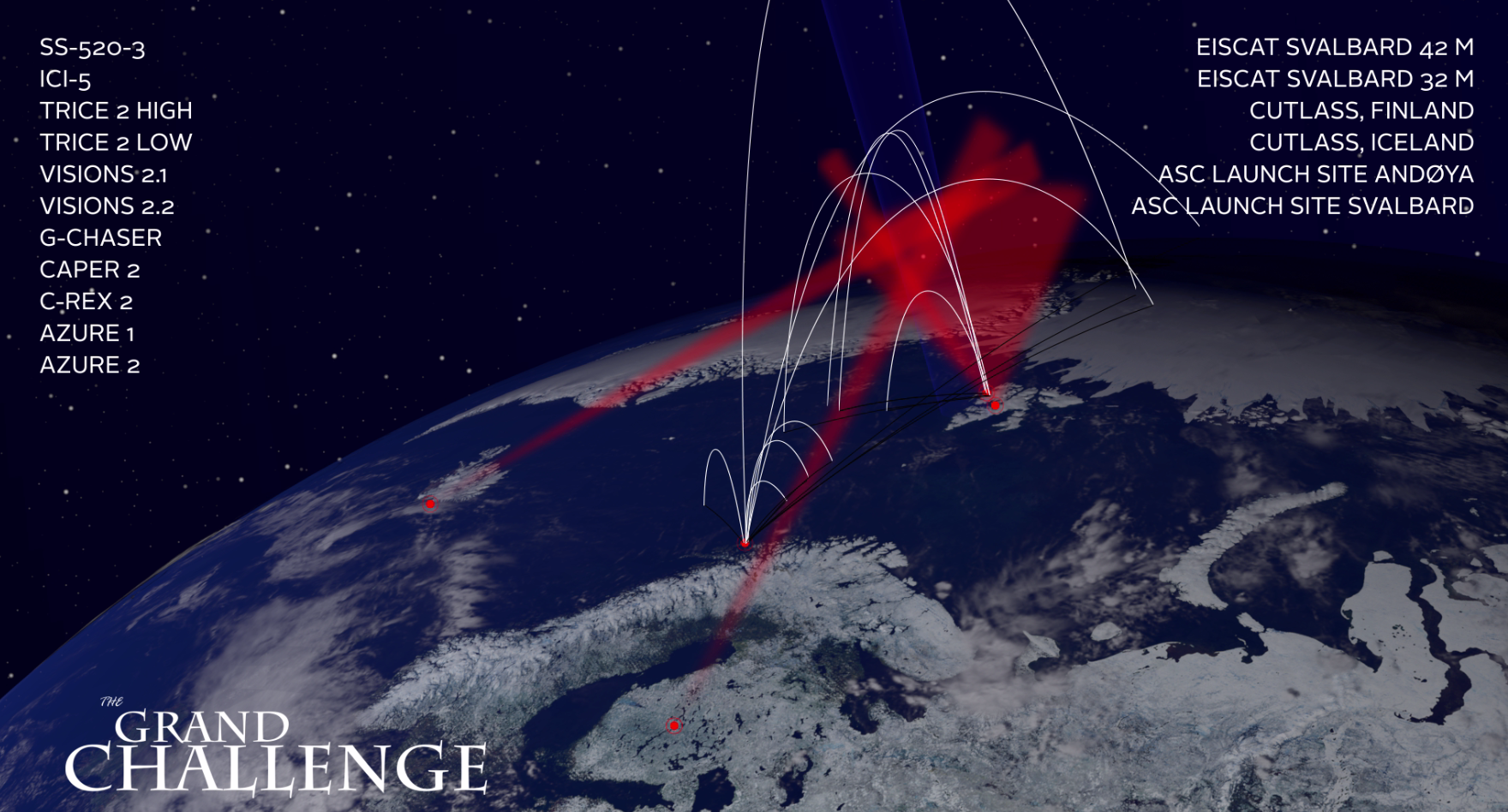The United States, Norway and Japan signed a joint statement of scientific coordination on April 6, 2017, for participation in the Grand Challenge Initiative – Cusp — a series of international sounding rocket missions planned for launch in 2017-2019. The Grand Challenge will provide significant advances in understanding of near-Earth space beyond what each partners’ independent projects could achieve individually.
The Grand Challenge studies the cusp, a region at each pole where the magnetic bubble surrounding Earth dips inward, allowing space particles to funnel in toward our planet. The missions will launch from two sites in Norway – Andoya Space Center and Svalbard Rocket Range. Sounding rockets launched from these sites are able to fly into the cusp and measure the solar particles streaming from the sun.

The joint statement outlines a framework for data sharing and future collaboration between current and future Grand Challenge partners. All participants will develop a plan to make their data publicly available. Combining data from multiple missions maximizes the partners’ ability to research and understand this little-explored region of near-Earth space.
Ground-based sites will also provide valuable data during the missions. In some cases, launches will be conducted nearly simultaneously from Andoya and Svalbard, providing simultaneous observations at different altitudes and latitudes for the first time.
NASA missions include the Visualizing Ion Outflow via Neutral Atom Sensing-2 experiment or VISIONS-2, Twin Rockets to Investigate Cusp Electrodynamics or TRICE-2, The Cusp Alfven and Plasma Electrodyanmics Rocket or CAPER-2, Auroral Zone Upwelling Rocket Experiment or AZURE, and the Cusp-Region Experiment or C-REX 2, which also includes three Canadian university instruments.
The Japan Aerospace Exploration Agency will fly the SS-520-3, which investigates the ion outflow mechanism, and Norway will conduct the Investigation of Cusp Irregularities-5 or ICI-5 mission.
In addition, an international undergraduate student mission called G-Chaser will be conducted in January 2019.Additional partners are encouraged to join this effort by contributing a range of capabilities, such as ground-based observations, other space-based observations, theory, or modeling efforts. All partners will share equally in the combined database produced by GCI-Cusp.

Additional information on the GCI-Cusp is available at:
Karen Fox
NASA Headquarters, Washington DC
karen.c.fox@nasa.gov
301-286-6284
Keith Koehler
Wallops Flight Facility, Virginia
keith.a.koehler@nasa.gov
757-824-1579
Hilde Lynnebakken
University of Oslo
hilde.lynnebakken@fys.uio.no
+47 48 20 52 20
Chisato Ikuta
Japan Aerospace Exploration Agency (JAXA)
ikuta.chisato@jaxa.jp
+81-50-3362-7834
Christiane Hübner
Svalbard Integrated Arctic Earth Observing System
information@sios-svalbard.org
+47 7902 33 66































